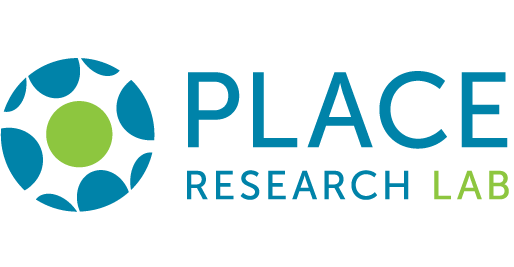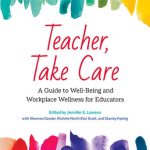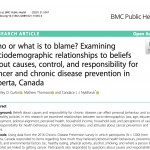Chronic Disease Prevention Survey
Since 2009, the Chronic Disease Prevention Survey has been conducted in various jurisdictions throughout Canada. The survey measures the knowledge, attitudes and beliefs of policy influencers and members of the general public. Understanding policy influencers’ ideas and public opinions around the risk factors related to chronic disease can help identify pathways to support evidence-based decision-making.
The Chronic Disease Prevention Survey consists of several interrelated sections polling respondents’ views on the causes of chronic disease; perspectives on health promotion; responsibility for health promotion policies and programs; contact with advocacy coalitions and lobbyists; and support for healthy public policies for improving nutrition, increasing physical activity, and reducing consumption of tobacco and alcohol. In the most recent versions, mental health and substance use policies have been examined. Policy influencers are asked the full breadth of survey items, while members of the public are asked a subset focusing on their views about the causes of chronic disease and support for healthy public policies.
Overview of completed surveys by year, jurisdictions and target population:
| Year | Target Population | Jurisdiction(s) | ||||
|---|---|---|---|---|---|---|
| General Public | Policy Influencer | Alberta | Manitoba | Northwest Territories | Quebec | |
| 2009 | √ | √ | √ | |||
| 2010 | √ | √ | ||||
| 2011 | √ | √ | √ | |||
| 2014 | √ | √ | √ | √ | √ | |
| 2015 | √ | √ | ||||
| 2016 | √ | √ | √ | √ | √ | |
| 2017 | √ | √ | √ | √ | ||
| 2019 | √ | √ | √ | √ | ||
| 2021 | √ | √ | √ | √ | ||
Information from the Chronic Disease Prevention Survey has been used by members of the Alberta Policy Coalition for Chronic Disease Prevention (APCCP) and other partners across Canada to advocate for healthy public policies like offering school food programs, banning flavoured tobacco, and taxing sugary beverages. Information from the survey has also been picked up by media outlets like the Canadian Broadcast Corporation; Global News; Metro News; and Talk Radio AM 630 (Edmonton), AM770 (Calgary), and AM640 (Toronto).
For more information about this project or to access survey data contact us at prevention.survey@ualberta.ca
Currently, there is one wave of data collection planned for Alberta and Manitoba in 2021.
The Intervention Ladder is a framework developed by the Nuffield Council on Bioethics[1] to characterize the level of ‘intrusiveness’ of public health policy initiatives. Interventions at the bottom of the ladder are considered to maintain the general public’s individual freedom, and each step upwards is a progression towards restricting the general public’s freedom and increasing state intervention [Note: In our definition, businesses and government institutions (municipal, provincial, and federal) are not considered part of the ‘general public’. For that reason, we added an additional rung to the ladder labelled ‘Reorient Government Action’ that directly implicate the way government takes action (i.e., through changes in the policy development process, judicial opportunities / legal capacity, or reorienting revenue), as distinct from policies that directly impact individual autonomy. ‘Reorient government action’ policies are in a category of their own, hence the different colour/shape in the codebook, and are not considered to always be the ‘most intrusive’)]. This framework is a useful tool for understanding options for healthy public policy development: the higher an intervention is on the ladder, the less likely it will be considered publicly acceptable, and the stronger the justification will be needed for implementation.
There is currently limited (and sometimes conflicting) research evidence on how to interpret each rung of the ladder and at which rung certain interventions fit best. Below is our adaptation of the framework to include more detailed definitions of each rung, including examples of public health policy initiatives related to four important chronic disease risk factors: alcohol use, unhealthy eating, physical inactivity, and tobacco use.
View the PLACE Research Lab Intervention Ladder Policy Analysis Framework here.
Suggested Citation: PLACE Research Lab Project Team. (2017). PLACE Research Lab Intervention Ladder Policy Analysis Framework. Edmonton, AB: School of Public Health, University of Alberta.
[1] Nuffield Council on Bioethics. Public health: ethical issues. Nuffield Council on Bioethics. 2007
Kongats, K., McGetrick, J. A., Raine, K. D., & Nykiforuk, C. I. (2020). Using the intervention ladder to examine policy influencer and general public support for potential tobacco control policies in Alberta and Quebec. Health Promotion & Chronic Disease Prevention in Canada: Research, Policy & Practice, 40(2), 47-57.
Kongats, K., McGetrick, J. A., Thomson, M., Raine, K. D., & Nykiforuk, C. I. (2020). Policy influencer and general public support for proposed alcohol healthy public policy options in Alberta and Quebec, Canada. Journal of Studies on Alcohol and Drugs, 81(1), 47-57.
Kongats, K., McGetrick, J., Raine, K., Voyer, C., & Nykiforuk, C. (2019). Assessing general public and policy influencer support for healthy public policies to promote healthy eating at the population level in two Canadian provinces. Public Health Nutrition, 22(8), 1492-1502.
McGetrick, J. A., Kongats, K., Raine, K. D., Voyer, C., & Nykiforuk, C. I. J. (2019). Healthy public policy options to promote physical activity for chronic disease prevention: Understanding Canadian policy influencer and general public preferences. Journal of Physical Activity and Health, 16(7), 565–574.
Nykiforuk, C.I.J., McGetrick., J.A., Raine, K. D. & Wild, C. T. (2019). Advocacy coalition impacts on healthy public policy-oriented learning in Alberta, Canada (2009–2016): A difference-in-differences analysis. Social Science & Medicine, 220, 31-40.
McGetrick, J. A., Raine, K., Wild, T. C. & Nykiforuk, C. (2018). Advancing strategies for agenda setting by health policy coalitions: A network analysis of the Canadian Chronic Disease Prevention Survey. Health Communication. 34(11), 1303-1312.
Nykiforuk, C.I., Wild, T.C. & Raine, K.D. (2014). Cancer beliefs and prevention policies: Comparing Canadian decision-maker and general population views. Cancer Causes and Control, 25(12), 1683-1696.
Raine, K.D., Nykiforuk C.I., Vu-Nguyen, K., Nieuwendyk, L., VanSpronsen, E., Reed, S. & Wild, T.C. (2014). Understanding key influencers’ knowledge, attitudes and beliefs about healthy public policy change for obesity prevention. Obesity, 22(11), 2426-2433.
- POWER UP! Coalition Linking Action and Science for Prevention (2017). KAB Survey Topic Summary. Healthy Eating in Recreational Facilities. School of Public Health, University of Alberta. powerup-kab-survey-topic-summary-healthy-eating-in-recreational-facilities-1-1
- POWER UP! Coalition Linking Action and Science for Prevention (2015). KAB Surveys topic summary: Physical activity policies related to urban planning and community design. Edmonton, AB: School of Public Health, University of Alberta. kab-survey-topic-summary-support-for-physical-activity-policies-2014
- POWER UP! Coalition Linking Action and Science for Prevention (2015). KAB Surveys topic summary: policies to reduce excessive consumption of alcohol. Edmonton, AB: School of Public Health, University of Alberta. kab-survey-topic-summary-support-for-alcohol-policies-2014
- POWER UP! Coalition Linking Action and Science for Prevention (2015). KAB Surveys topic summary: policies to promote healthy eating. Edmonton, AB: School of Public Health, University of Alberta. kab-survey-topic-summary-healthy-eating-policies-2014
- POWER UP! Coalition Linking Action and Science for Prevention (2015). KAB Surveys topic summary: policies to promote healthy eating in schools. Edmonton, AB: School of Public Health, University of Alberta. kab-survey-topic-summary-healthy-eating-in-schools-2014
2016-2021 Alberta Innovates – Health Solutions
2014-2019 Canadian Institutes of Health Research in partnership with Public Health Agency of Canada and Alberta Innovates – Health Solutions (Dr. Candace Nykiforuk’s Applied Public Health Chair)
2016-2017 Canadian Institutes of Health Research
2014-2016 Canadian Partnership Against Cancer’s Coalitions Linking Action & Science for Prevention (CLASP) program (through POWER UP! which stands for Policy Opportunity Windows – Engaging Research Uptake in Practice)
2009-2011 Alberta Cancer Board – Population Health Innovative Intervention Fund
Support for Active Travel Policy in Alberta 2019
Policy, Location and Access in Community Environments (PLACE) Research Lab (April 2020). Support for Active Travel Policy in Alberta. PLACE Research Lab, School of Public Health, University of Alberta. Available at: https://placeresearchlab.com/wp-content/uploads/2020/04/infographic_cdp_2019_at-final-1.pdf
Support for Healthy Nutrition Policy in Alberta 2019
Policy, Location and Access in Community Environments (PLACE) Research Lab (April 2020). Support for Healthy Nutrition Policy in Alberta. PLACE Research Lab, School of Public Health, University of Alberta. Available at: https://placeresearchlab.com/wp-content/uploads/2020/04/infographic_cdp-2019_he-final.pdf



